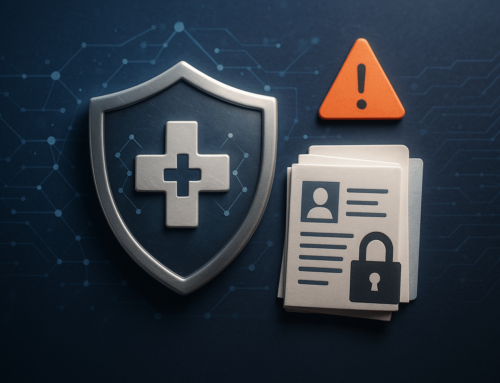
Founded by the U.S. Department of Commerce, the National Institute of Standards and Technology (NIST) Cybersecurity Framework offers a comprehensive approach to managing cybersecurity risks in various sectors, including healthcare.
As healthcare organizations have increasingly embraced digitalization, from electronic health records (EHR) to telemedicine, the sector has become more vulnerable to cyberthreats.
Adopting the NIST Cybersecurity Framework for healthcare is not just a measure of compliance; it’s a strategic move toward ensuring the confidentiality, integrity, and availability of critical healthcare data in the digital age and as a companion to your existing healthcare compliance plan.
The Health Information Technology for Economic and Clinical Health (HITECH) Act requires the U.S. Department of Health and Human Services to post a list of cybersecurity breaches against healthcare organizations affecting 500 individuals or more.
Maintained by the Office of Civil Rights (OCR), the list is consistently substantial and continually updated with events that include hacking incidents, unauthorized access, and theft. The list reveals why NIST Healthcare Cybersecurity is an essential protective standard.
Please continue reading to learn how the NIST Healthcare Framework can safeguard your healthcare organization, including its critical systems, employee records, patient data, and other confidential information.
Understanding the NIST Healthcare Framework
The NIST Cybersecurity Framework has developed guidelines for healthcare organizations to follow to manage and mitigate cybersecurity risks to avoid HIPAA breach risks and other adverse cybersecurity incidents.
Fortunately, the guidelines provided by NIST were designed—and are updated—to be flexible and adaptable to enable healthcare systems of all sizes to apply the principles according to their specific needs and risk profiles.
6 Functions of the NIST Healthcare Framework
The Six Functions serve as the foundation and backbone of the Framework. The rest of the elements stem from this core list:
- Identify — recognize the healthcare organization’s assets, cybersecurity policies, and risk management priorities
- Protect — implement safeguards to ensure the delivery of critical services to the healthcare body
- Detect — develop activities to identify the occurrence of a cybersecurity event and begin collecting information
- Respond — establish actions to take in response to a detected cybersecurity incident
- Recover — plan for business continuity and resilience and restore any capabilities or services impaired due to a cybersecurity incident
- Govern — make and carry out informed decisions on cybersecurity strategy
Benefits of the NIST Framework for Healthcare Organizations
Adopting the NIST Healthcare Framework offers numerous benefits that include:
- Patient trust. By safeguarding patient data, healthcare organizations can build and maintain patient trust.
- Enhanced risk management. The framework helps identify and prioritize vulnerabilities based on potential impact, enabling better resource allocation to prevent negative cybersecurity events.
- Regulatory compliance. Implementing the Framework can aid in meeting regulatory requirements, such as HIPAA, and avoiding potential fines and legal issues.
- Operational resilience. Healthcare organizations can readily respond to and recover from cybersecurity incidents, minimizing disruptions to healthcare services.
Implementation of the NIST Healthcare Cybersecurity Framework
Implementing the Framework involves developing a strategic approach tailored to the specific needs of your healthcare system and any existing cybersecurity protocols.
Here are essential steps to take to implement the Framework:
Assess current cybersecurity approaches and practices:
- Work with IT and cybersecurity leaders to comprehensively assess current cybersecurity measures and policies for your health organization.
- Identify gaps in your healthcare organization’s security practices compared to the NIST Framework’s recommendations.
Design a tailored implementation plan:
- Prioritize actions based on your healthcare organization’s risk assessment and business needs.
- Set realistic milestones and measure progress against them.
Foster a culture of cybersecurity awareness:
- Train staff on cybersecurity best practices and the importance of their role in maintaining security for your health organization, patients, stakeholders, and the public.
- Regularly update training materials to reflect emerging threats and new security technologies in healthcare and the NIST Cybersecurity Framework.
Ensure Effective Adoption and Implementation of NIST Healthcare Cybersecurity
Implementing this Framework offers you a proactive step toward protecting your healthcare organization and, in a larger sense, the future of healthcare security. As health organizations increasingly adopt this Framework, it informs cybercriminals that everyone is on watch to prevent their malicious acts.









